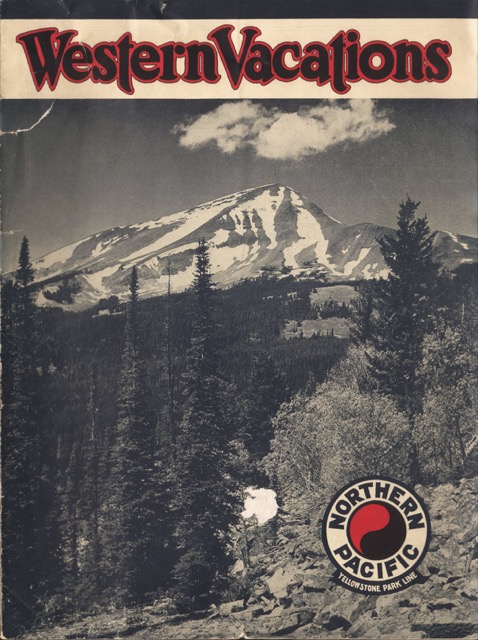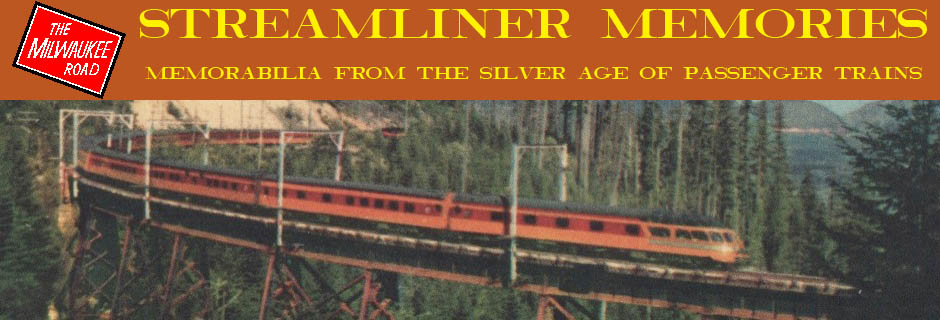Half of this eight-page booklet shows full-page or nearly-full-page photos of sights along the NP, including Mt. Rainier, the Columbia River Highway, and Yellowstone. Two pages very briefly describe some typical tours people can take in the West, such as sightseeing trips in various cities and tours of national parks.
 Click image to download an 6.1-MB PDF of this booklet.
Click image to download an 6.1-MB PDF of this booklet.
One page describes a ten-day tour from St. Paul to Yellowstone for $48.55. The final page pictures eight different hotels, from Old Faithful Inn to the Benson in Portland. One of the hotels shown is Mt. Baker Lodge. Since that hotel opened in 1927 and burned to the ground in 1931, the booklet must date from around 1930.

I always thought “natatorium” is one of those great made up terms to describe an indoor swimming pool. It’s really too bad about the Mt. Baker Lodge. I must have been a beautiful place from the pictures and descriptions. The lodge was built literally in the middle of nowhere in 1926, with most of the material bought in by pack train before the first road was put through. The development company wanted the lodge to be “ultra modern”, and it was, with hot and cold water, electric lights, oil heaters, and a telephone in each room. Because the lodge had to generate its own power, the cost of AC generators was out of the question, so everything was DC. DC wiring in a building that large is hard to do since you need some hefty wires to properly carry a DC load. Unfortunately, the developers were running out of money even before the lodge was finished. They skimped on wire sizes and connections, and there were several small fires from overheated wiring in the short history of the place. The final fire started in the roof from overheated wiring, and the lodge’s fire pumps, also powered by DC, didn’t work because the large oil tank supplying the DC generators, also caught fire. Without water to fight the fire in the roof, the almost virgin timbers and shake roof caught fire and, within an hour, the entire main lodge burned to the ground in what was described as a spectacular inferno. The loss was only half covered by insurance since the insurance company wouldn’t cover more without a sprinkler system and a switch to AC power, neither one of which the developers could afford. It was the beginnings of the Depression and, even if the developers had the money, the idea of rebuilding wasn’t financially feasible. The lodge never made money, and almost everyone connected with the development went bankrupt after the fire. Sad end to what would have been one of America’s great mountain lodges if it had survived.
Regards, Jim